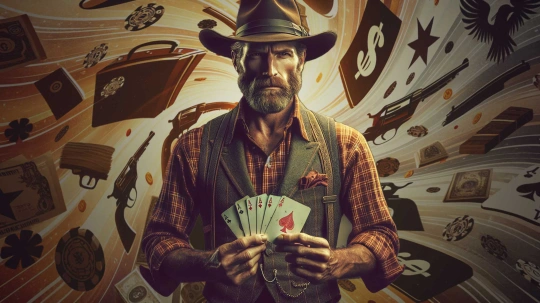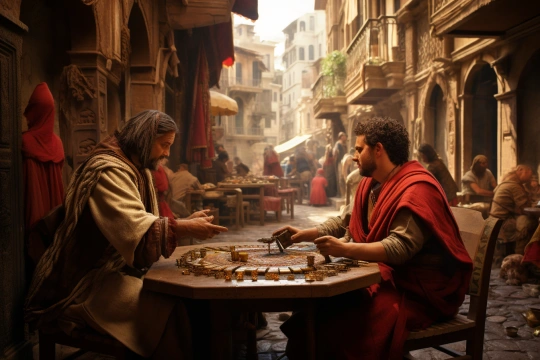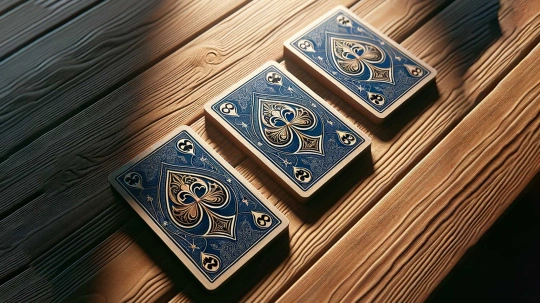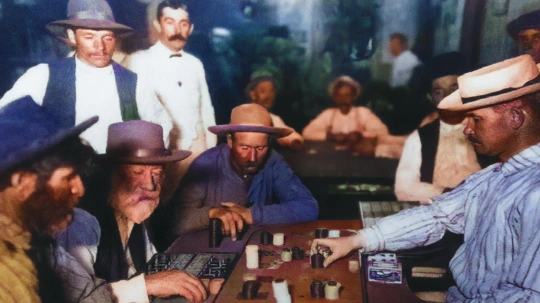In a world where digital technology and virtual reality have become part of our daily lives, we sometimes forget about the simple pleasures that board games give us.
Plunge into history, feel the spirit of ancient times and get acquainted with the game that was the favorite pastime of the pharaohs of Ancient Egypt. In this article we will reveal the secrets and originality of Senet , introduce you to its rules and, for example, how this game exists in modern culture. You are ready for a journey into the past that begins right now.
History of Senet
Senet , a game that goes back centuries, first appeared in Ancient Egypt about 5,000 years ago. Archaeologists have found Senet boards in graves and tombs, indicating its importance in Egyptian culture. The game was so widespread that even Pharaoh Tutankhamun was buried with his favorite Seneta board .
Senet was not only a popular board game, but also a ceremonial ritual. It was played both in royal chambers and in ordinary homes, and was also used for special and ritual purposes. The game of Senet was often depicted in the art of Ancient Egypt, which gave it originality in the social and spiritual life of the people.
For some time , Senet spread beyond Egypt, reaching such distant corners as Mesopotamia, Canaan and Crete. But, despite its geographical popularity, it was the Egyptian interpretation of Senet that remained the most original and ancient.
Senet : Mirror of Ancient Egyptian Culture
Senet incorporates several aspects of ancient Egyptian culture and religion, which are reflected in its symbolism, design, and slot machine mechanics.
Afterlife: Senet is believed to symbolize the journey of the deceased to the afterlife. This is a reflection of the Egyptian belief in the afterlife and reincarnation.
Religious Symbols: Some design details of the Senet board and tiles may reflect Egyptian symbolism. For example, some Senet boards are decorated with images of gods and heraldic devices.
Social Hierarchy: The game of Senet was popular among all social classes in Ancient Egypt, but some of the most elaborate game boards were organized by the pharaohs and elite. This is a reflection of the stratification of Egyptian society.
Cosmology: The rules and mechanics of Senet may reflect ancient Egyptian ideas about the cosmos and fate. For example, the throwing of sticks that determines the course of the game may symbolize the idea of chance and fate in Egyptian space.
Rituals: There is speculation that Senet was played as a ritual or rite related to the afterlife and the use of evil spirits. This is a reflection of the rituals in Egyptian religion.
Thus, the servants of Senet in ancient Egyptian culture and religion provide unique perspectives on their beliefs about the window of death, the afterlife, fate, and social hierarchy.
Rules of the game Senet
There are many variations of the rules of the game in Senete , since the original Egyptian rules have not survived. The following are generally accepted rules based on scientific research and interpretation.
Beginning of the game
Each player starts with five pieces located on the first five squares of the playing field. Players take turns throwing four sticks to determine the number of moves. The number of sticks above the light sides that fall out determines the number of moves.
Progress of the game
Players move around the cells, moving from the bottom left corner up, then down the center row, and then up the right row. The goal of the game is to carry all the pieces through the entire gameplay and remove them from the board.
If a piece ends up in a cell already occupied by an opponent's piece, they will switch places. If there are two or more chips from one player on a cell, this cell is considered blocked, and no chip can stop on it.
Special cells
Some squares on the board have special meaning:
26th square (Waters of Chaos): If a piece appears on this square, it returns to the 15th square and the player misses the next turn.
27th, 28th, 29th and 30th squares: In order for the chip to move to one of these squares, the player must roll the exact number. If a piece lands on the 30th chamber, it is removed from the board.
End of the game
The game ends when one player removes all of his pieces from the board. This player is declared the winner.
These rules are generally accepted, but changes or additions can always be made to them to add more strategy or variation to the game.
Evaluation of Senet in modern games
Senet, being one of the oldest known board games, contributed to the development of the gaming industry. This game is a practical illustration of how simple rules and mechanics can create deep and exciting strategy, which is a key tenet of many modern board and video games.
Board Game Research
Senet contributed to the development of board games. Elements of Senet can be seen in popular board games such as Checkers and Reverse Checkers (also original as Queen), where pieces move around the board according to dice rolls or random mechanics, as well as in games with block play and exchange. positions.
Video Game Research
The core mechanic of many strategy and board video games involves moving pieces (or units) around the game board with the goal of reaching an end point or completing a guided task, reminiscent of the basic principles of Senet.
Additionally, some video games include my playing Senet as a mini-game. For example, in the Assassins video game series Creed ", which includes various historical eras including Ancient Egypt, players can play Senet within the main games.
In general, mechanics and strategies based on Senet are an important part of the gaming landscape, and their influence continues to be felt in modern games.
While Senet's direct influence on modern board games may be difficult to trace due to his ancient history, some games have advanced mechanics that indicate Senet's influence on their development is guaranteed. Here are some of them:
Backgammon: This ancient game may have its origins in Senet and other similar games. In Tavlei, like Senet , players move their pieces according to the roll of the dice and aim to clear all their pieces from the board.
Parcheesi: This traditional Indian game involves some drinks with Senet , including moving the pieces around the board to remove them completely.
Ludo: Ludo, which is a simplified mark of Parcheesi , may also be related to Senet . In Ludo, players move their pieces around the board and return them to the "home", leaving a dice roll on the platform.
Sorry !: This popular board game also has a mechanism available with Senet for moving pieces around the board to reach an end point, with pieces being able to be sent back "home" by other players.
Problem: In this game, like Senet , players move their pieces around the board, aiming to be the first to reach the end point.
These games share similar mechanics to Senet , indicating its lasting influence on the development of board games. However, it is worth noting that many of these games were also inspired by other historical and cultural contexts.
Conclusion
Senet , being one of the oldest and most famous board games in history, leaves a sharp mark on the cultural heritage of mankind. His contributions to the development of board games, his role in ancient Egyptian culture and religion, and his continued presence in the modern world make him phenomenal.
Senet represents a unique combination of lifestyle, strategy and symbolism that continues to benefit people today. Despite this, we may not fully understand all aspects of this ancient game, its influence and significance are undeniable.
Whether you're a historian, an archaeologist, a board game enthusiast, or just a curious soul, Senet offers a unique and interesting journey into the past, providing a glimpse into ancient culture through the lens of gaming. And while Senet may not be as popular today as some modern board games, its historical significance and continuing influence make it still an important and valuable part of our cultural heritage.





